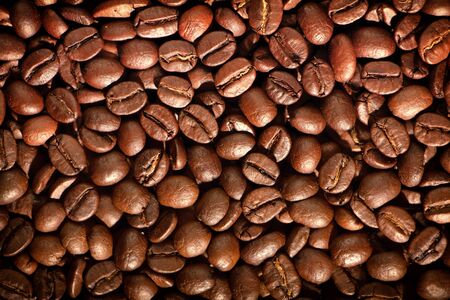1. Setting the Scene: America’s Morning Brew
For millions of Americans, the day doesn’t truly begin until that first cup of coffee is in hand. Whether it’s a quick stop at a local drive-thru or brewing a favorite blend at home, coffee is woven deeply into the fabric of American mornings. But this isn’t just about caffeine; it’s about ritual, comfort, and even identity. The choices we make at the coffee shop—regular or decaf, organic or conventional—carry ripple effects that stretch far beyond our kitchen tables.
The Power Behind Every Cup
Americans are some of the world’s most dedicated coffee drinkers. According to the National Coffee Association, over 60% of U.S. adults drink coffee daily. This steady demand shapes not just what’s available on supermarket shelves but also how coffee is grown halfway around the world. As more consumers show interest in sustainability and health, farmers from Colombia to Ethiopia feel the impact, adjusting their methods to meet these changing tastes.
How U.S. Coffee Choices Influence Farming Practices
| Consumer Preference | Impact on Coffee Farmers |
|---|---|
| Conventional Coffee | Stable demand for high-yield crops; often relies on traditional fertilizers and pesticides for maximum output. |
| Organic Coffee | Growing market for chemical-free beans; requires new farming techniques and certifications but can offer higher prices per pound. |
Coffee Trends: More Than Just a Fad
Trends like “third wave” coffee shops, cold brews, and single-origin beans aren’t just marketing buzz—they signal real shifts in what consumers value. Americans are asking questions about where their coffee comes from and how it’s grown. This growing curiosity means farmers are weighing the pros and cons of going organic versus sticking with conventional production methods.
The Global Footprint of an American Habit
Your morning routine might feel personal, but it’s part of a much bigger story. When you choose organic or conventional coffee at your favorite café or grocery store, you’re helping decide what kind of farming will thrive in coffee-growing regions worldwide. In other words, every cup is a vote—and American preferences have global reach.
2. Understanding Organic and Conventional Coffee
Breaking Down the Basics
If you’ve ever stood in your local grocery store, staring at bags of coffee labeled “organic” and “conventional,” you might have wondered what those words really mean. Let’s take a closer look at what sets these two coffee types apart and how those differences end up affecting the coffee in your cup.
What Makes Coffee Organic?
Organic coffee isn’t just a trendy label—it’s about how the beans are grown and processed. Farmers who grow organic coffee follow strict guidelines set by certifying bodies like the USDA. This means no synthetic fertilizers, no chemical pesticides, and a commitment to environmentally friendly farming methods. The goal is to protect soil health, preserve biodiversity, and keep waterways clean.
Key Features of Organic Coffee Production:
- No synthetic chemicals or pesticides
- Shade-grown to support ecosystems
- Crop rotation and composting for soil health
- Certification required (like USDA Organic)
What About Conventional Coffee?
Conventional coffee production relies on modern agricultural methods that often use synthetic fertilizers and pesticides. These tools help farmers control pests and boost yields but can also impact the environment differently than organic practices.
Key Features of Conventional Coffee Production:
- Synthetic fertilizers and pesticides used
- Focus on maximizing yield
- Often grown in full sun for higher productivity
- No certification required
The Differences at a Glance
| Coffee Type | Main Practices | Environmental Impact | Certification Needed? |
|---|---|---|---|
| Organic | No synthetic chemicals; eco-friendly techniques; shade-grown | Lower chemical runoff; supports biodiversity; healthier soil | Yes (e.g., USDA Organic) |
| Conventional | Synthetic fertilizers & pesticides; focus on yield; often sun-grown | Higher risk of chemical runoff; less habitat diversity; potential soil depletion | No |
Why It Matters for Your Cup of Joe
The way your coffee is grown doesn’t just affect the environment—it can also change the flavor profile, price tag, and even how you feel about that morning brew. Whether it’s the earthy undertones from rich organic soils or the punchy brightness of conventional beans, every choice has a story behind it. Knowing what goes into each method helps you sip more mindfully—and gives farmers the recognition they deserve for their hard work.

3. Dollars and (Coffee) Sense: Comparing Production Costs
For American coffee lovers, the buzz around “organic” is everywhere—from your neighborhood café to grocery store aisles. But for the folks growing those beans, choosing between organic and conventional farming isn’t just about taste or trend—it’s dollars and sense. Let’s peel back the label and see what it really costs to grow your morning cup.
The Basics: What Goes In?
Running a coffee farm—whether organic or conventional—means juggling a ton of moving parts. Here’s how the key input costs stack up:
| Expense | Organic Coffee | Conventional Coffee |
|---|---|---|
| Fertilizers | Compost, manure, organic-certified inputs (pricier, often homemade or bought at a premium) | Synthetic fertilizers (cheaper, widely available) |
| Pest & Disease Control | Natural sprays, manual labor, crop rotation (labor-intensive, sometimes less effective) | Chemical pesticides/fungicides (efficient, but can add up over time) |
| Certification Fees | USDA Organic certification is expensive and requires annual renewal | No certification needed unless pursuing specialty labels |
| Labor | Higher demand for hands-on weeding, composting, monitoring | Less labor for weed/pest control thanks to chemicals |
| Equipment/Machinery | Similar for both systems, though some tools are specific to organic needs | Standard machinery; some may be required for chemical application |
Harvest Time: Yield & Variability
This is where things get real. On average, conventional coffee farms see higher yields per acre than organic ones. Chemicals help keep pests at bay and boost plant growth—but there’s a catch. Over time, soil health can decline with heavy chemical use, possibly lowering yields in the long haul.
Organic farmers might harvest less per acre—sometimes 20-30% less—but their beans can fetch higher prices if they find the right buyer. Plus, healthier soils may pay off down the road with more resilient crops.
Yield Snapshot (per acre):*
| Organic Farm | Conventional Farm | |
|---|---|---|
| Typical Yield Range (lbs/acre) | 800-1,200 lbs | 1,100-1,500 lbs |
*Numbers vary by country, region, and climate.
The Hidden Risks in Every Cup
No matter which route farmers choose, there are risks baked into every season:
- Pest outbreaks: Organic farms have fewer options for fighting sudden infestations.
- Disease pressure: Conventional chemicals can help—but resistance builds over time.
- Market swings: Prices for both types of beans bounce up and down with global trends. Organic premiums aren’t always guaranteed.
- Weather whiplash: Droughts or hurricanes hit everyone hard—especially smallholders without insurance or backup funds.
A Real-World Balancing Act
The economic realities? It’s never black-and-white. Organic farming means betting on long-term soil health and niche markets; conventional farming bets on short-term yield and efficiency. At the end of the day, every farmer’s decision comes down to balancing costs today with hopes—and risks—for tomorrow.
4. Navigating the American Market
Specialty Coffee: The Flavor Revolution
Walk into any American coffee shop, and you’ll hear words like “single origin,” “organic,” or “direct trade” tossed around like old friends. Over the past decade, U.S. coffee drinkers have become adventurous, eager to try new flavors and stories from around the globe. This rise in specialty coffee means more than just a cup that tastes different—it’s also about how that cup was produced.
Shifting Consumer Priorities
Today’s American coffee drinker is looking for more than caffeine; they want sustainability, transparency, and a connection to where their beans come from. This shift has made both organic and conventional farmers rethink their approach to growing and selling coffee. Consumers are asking questions like:
- Was this coffee grown without synthetic chemicals?
- Does the farmer earn a fair wage?
- What’s the story behind this farm?
Certification vs. Storytelling: What Sells?
When it comes to picking up a bag of beans, Americans are influenced by two big things: certification and storytelling. Here’s how each plays out at your local store or favorite café:
| Organic Certification | Storytelling | |
|---|---|---|
| What it means | Proof that coffee meets USDA organic standards | A personal narrative about the farmer, region, or unique process |
| Main appeal | Assurance of no synthetic pesticides or fertilizers | Connection to people and places behind the cup |
| Consumer trust | High (official seal) | Varies (relies on authenticity of the story) |
| Impact on price | Tends to command higher prices due to certification costs | Can fetch premium if story resonates with buyers |
| Main challenge for farmers | Bureaucratic hurdles, cost of certification renewal | The need for marketing skills and connecting with buyers directly |
The Farmer’s Dilemma: Which Path Leads to Success?
For American coffee buyers—whether sourcing green beans or sipping at home—both organic certification and a compelling farm story can influence what ends up in their mug. Farmers must decide if investing in official labels is worth it or if sharing their unique journey can carry them just as far in the hearts (and cups) of U.S. consumers.
5. The Farmer’s Bottom Line
Profit Margins: Organic vs. Conventional Coffee
For American coffee farmers, every decision boils down to the bottom line. The choice between organic and conventional coffee production isn’t just about ideals—it’s about hard numbers. Conventional farming often promises higher short-term yields and lower costs for fertilizers and pesticides, which can mean more immediate cash in hand. On the flip side, organic coffee usually sells for a premium, but the costs to certify and maintain organic status—and sometimes lower crop yields—can eat into those profits.
| Factor | Conventional | Organic |
|---|---|---|
| Average Yield (lbs/acre) | 1,800-2,200 | 1,400-1,700 |
| Market Price ($/lb) | $1.50–$2.00 | $2.50–$3.00 |
| Input Costs ($/acre) | Lower | Higher (certification, labor) |
| Selling Channels | Mainstream markets | Specialty shops, direct-to-consumer |
Long-Term Sustainability: Betting on the Future
The profit game isn’t just about this year’s harvest. Many U.S. growers are weighing long-term sustainability against quick wins. Organic methods might require more effort up front—like composting and natural pest management—but they’re less likely to degrade soil or cause water issues over time. That means healthier land for future crops and potential for ongoing premium pricing as eco-minded consumers grow in number.
The Changing Calculus: Climate & Policy Shifts
Coffee farming in America is also feeling the heat from climate change—literally. Unpredictable weather patterns can hammer both organic and conventional crops, but organic systems may be better at handling extremes thanks to healthier soils and biodiversity. Meanwhile, policy shifts like incentives for sustainable agriculture or stricter pesticide regulations are shaking up the math for farmers coast to coast.
What’s Next for America’s Coffee Providers?
The decision between organic and conventional isn’t set in stone; it’s a moving target shaped by economics, environment, and evolving consumer tastes. Farmers must stay nimble—crunching the numbers each season while keeping an eye on new policies and market trends that could tilt the balance one way or another.
6. Grit and Grind: The Future of Coffee Farming
American coffee farmers are a tough bunch—adaptable, innovative, and resilient. As the economic realities of choosing between organic and conventional coffee production keep shifting, the future is about rolling with the punches while keeping an eye on new opportunities. Let’s look at what’s brewing for the next chapter of coffee farming in the U.S.
Technology: A Game-Changer for Coffee Growers
From precision agriculture to advanced irrigation systems, technology is making waves in the coffee world. American farmers are tapping into tools like soil sensors, drones, and data-driven apps to help manage pests, monitor crop health, and even optimize harvests. This tech boost isn’t just for big operations—small-scale growers are also finding affordable solutions that fit their needs.
Comparing Tech Adoption: Organic vs. Conventional Farms
| Technology Type | Organic Farms | Conventional Farms |
|---|---|---|
| Soil Sensors | Monitor natural nutrient cycles; minimize inputs | Optimize fertilizer and pesticide use |
| Drones | Spot-check for disease without chemicals | Apply treatments quickly across large areas |
| Mobile Apps | Track organic certification requirements | Streamline conventional compliance and record-keeping |
Adaptation: Staying Nimble in Changing Times
Coffee farming is never static. Weather patterns shift, market prices bounce around, and consumer tastes evolve. American farmers—whether they’re organic or conventional—are learning to diversify their crops, experiment with new varieties, and even collaborate with local roasters or direct-to-consumer platforms. It’s all about staying ahead of the curve while managing risk.
Coffee Farmer Strategies for Success
- Diversifying Crops: Growing more than just coffee (like avocados or cacao) to buffer against price drops.
- Community Networks: Sharing knowledge, equipment, and resources with other local growers.
- Sustainable Practices: Investing in shade trees, composting systems, and water-saving techniques to keep farms healthy long-term.
The Resilience Factor: Grit That Grows Stronger Each Year
No matter which path they choose—organic or conventional—America’s coffee farmers face challenges head-on. Their grit comes from generations of hard work on the land. By embracing new tools, adapting business models, and supporting each other through thick and thin, these growers are building a future where both people and planet thrive.


